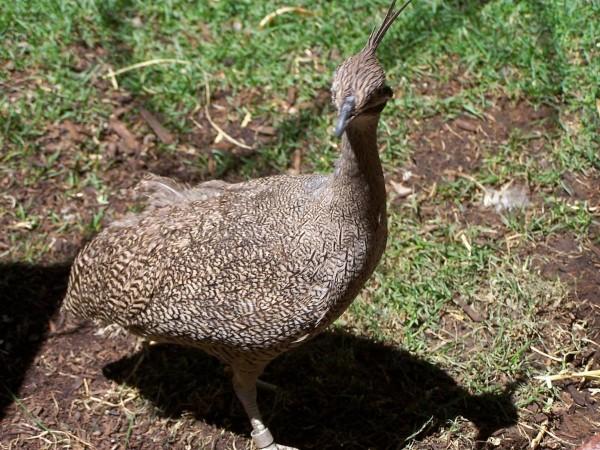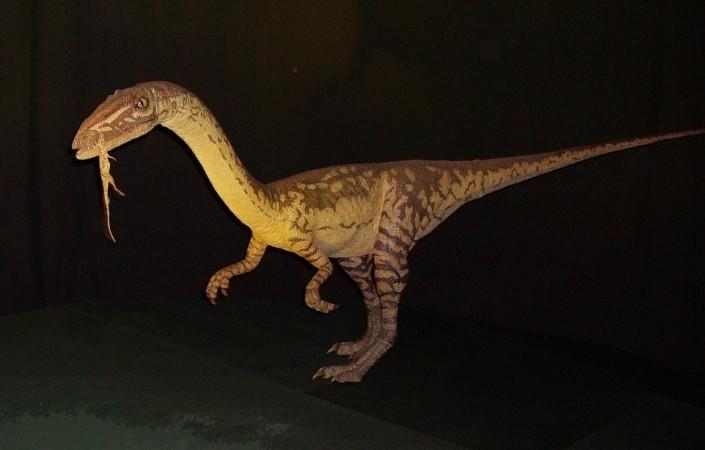Nearly all of us have been informed about dinosaur locomotion by popular franchises such as Jurassic Park and The Land Before Time. Most of the two-legged therapod dinosaurs shown running, largely have static tails, with perhaps an occasional wiggle.
Now, scientists state that bipedal dinosaurs wagged their tails while running, much like how human beings swing their arms when they move. According to a new study by an interdisciplinary team of researchers, there is a functional similarity between human arms and dinosaur tails.
Employing sophisticated computer simulations and utilizing novel techniques developed for the research, the authors assessed the running biomechanics of bipedal dinosaurs with tails. Using simulations of Coelophysis, a small therapod that lived over 200 million years ago, the study demonstrated that bipedal dinosaurs wagged their tails as they ran for assistance with angular momentum.
"Essentially, our findings show that dinosaurs like Tyrannosaurus and Velociraptor wagged their tails from side to side when they ran, which helped them stay balanced," said Dr. Peter Bishop, lead author of the study, in a statement. The findings of the research were published in the journal Science Advances.
Turning to A Tiny Descendant

Human beings swing their arms when they move. It helps with the minimizing of angular momentum—the property of a mass in motion about a given axis; which in a closed domain, is conserved. It is the manipulation of this principle that decides the effectiveness with which figure skaters and ballerinas can execute pirouettes.
So far, non-avian dinosaur tails have been considered static in previous studies; as a rear extension of the pelvis that serves as a counterbalance. However, through the current study, the researchers dispelled speculations surrounding the importance of dinosaur tails and mechanically demonstrated a previously unidentified, vital, and 3D dynamic function.
In order to guarantee the reliability of their method, the team turned to Eudromia elegans, a South American tinamou bird that weighs around 500 g. Its walking and running were simulated. The simulations were found to correctly replicate various crucial aspects of running and walking, as observed through the comparison of results from older experimental data for the species.
Wagging Their Tails

Relying on the learnings from the tinamou bird's simulations, the researchers modeled the movements of Coelophysis. It was a small bipedal and ground-dwelling carnivorous therapod weighing around 15 kg and lived approximately 210 million years ago.
"I was very surprised when I first saw the simulation results. After running a barrage of further simulations, including models with heavier tails, lighter tails, and no tail at all, we were able to demonstrate that tail wagging was a means of controlling angular momentum throughout gait," stated, Dr.Bishop.
By means of side-to-side wagging, the tail of a bipedal dinosaur served as the primary regulator of angular momentum. This helped in dynamically counterbalancing the movement of other body parts such as hindlimbs.

Additionally, when the tail was made to wag out of sync with the hindlimbs, it was found that the energy budget of the model was significantly increased. Similar to human beings, this 'control' or regulation of angular momentum aids in making movement more stable and economical.
Overcoming Limitation of Computational Power
The need for high computing power had greatly limited the simulations of dinosaur behaviour attempted by older studies. They required a supercomputer for the resolution of complex equations that were involved. However, the novel techniques utilized in the current research helped the authors simulate complete gait cycles in less than 30 minutes using a standard laptop.
"We had been developing methods for rapid computer simulations of human movements, by combining several new numerical techniques to make our simulations more than 20 times faster than previous attempts. When we were invited to see whether we could apply the same methods to simulate gaits in extinct species, we were thrilled at the opportunity and jumped on board," illustrated Dr. Antoine Falisse and Dr. Friedl De Groote, co-authors of the study.
Informing Robotics and Animation
Along with providing a new understanding of prehistoric animal locomotion, the findings of the study also hold significance for application in robotics. Several next-generation bio-inspired robots have already drawn design inspiration from the swinging tails of running animals—such as cheetahs—for their development.
Also, the new learnings from the Coelophysis simulations can enable the improvement of acceleration, maneuvering performance, and economy in mechanics and engineering. Despite dinosaurs being given a slight 'wag' of tails while running in movies and cartoons, the motions depicted are opposite in comparison to the results of the study. Therefore, the findings can also help inform animators on more accurate and realistic depictions in the future.
"These cutting-edge three-dimensional simulations show that we've still got much to learn about dinosaurs. Our results raise interesting questions about how dinosaur tails were used in a whole array of behaviors, not just including locomotion, and how these functions evolved," concluded Dr. John Hutchinson, co-author of the study









